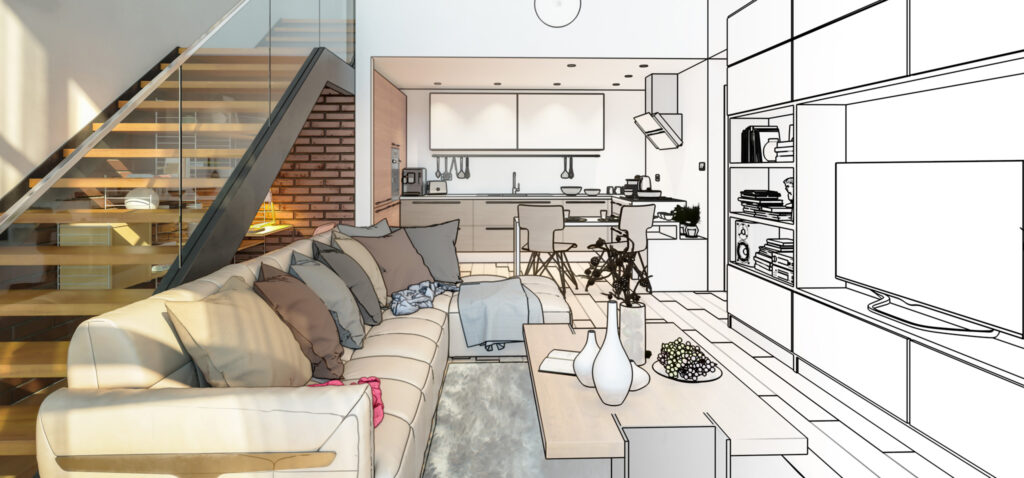Moving into a new home is an exciting milestone—filled with possibility, fresh starts, and the thrill of turning a space into a personal sanctuary. But decorating a new home can also feel overwhelming. With blank walls and bare rooms staring back at you, it’s hard to know where to begin. This guide will walk you through the essential steps to decorating your new home, from creating a cohesive vision to personalizing each Room.
1. Start with a Vision
Before buying furniture or picking out paint colors, take some time to create a vision for your home. Think about how you want your space to feel: cozy and rustic, modern and minimal, eclectic and bold. Look for inspiration on Pinterest, Instagram, or design websites. Save images that speak to you, and notice patterns in the colors, textures, and layouts you’re drawn to.
Ask yourself:
- What mood do I want each Room to evoke?
- What’s my lifestyle like—do I entertain often, work from home, or have young kids or pets?
- What are my must-haves in each space?
Creating a mood board for each Room can help you maintain a consistent style throughout your home while giving each area its personality.
2. Take Inventory and Plan Your Budget
Before heading to the store or clicking “add to cart,” take stock of what you already own. You may be surprised how many pieces can be repurposed in your new home with a fresh coat of paint or updated hardware. Decide what stays, what goes, and what needs replacing.
Then, make a budget. Prioritize big-ticket items that anchor the Room, like a comfortable sofa or quality mattress. Don’t forget to leave some wiggle room for decor, lighting, and unexpected finds.
A simple budgeting strategy:
- 40% on furniture
- 20% on lighting and rugs
- 20% on decor and art
- 20% on extras or contingency
3. Focus on One Room at a Time
It’s tempting to decorate your entire home simultaneously, but that can lead to stress, budget blowouts, and rushed decisions. Instead, focus on one Room at a time. Start with the spaces you often use, like the living room or bedroom. Permit yourself to go slowly; great design doesn’t happen overnight.
Working room-by-room allows you to:
- Allocate your budget more effectively.
- Learn what works and doesn’t in your new space.
- Build confidence in your style choices.
4. Choose a Color Palette
Color plays a crucial role in setting a room’s tone. When selecting a color palette, think beyond paint. Your palette should include wall colors, furniture, fabrics, art, and accessories.
Tips for choosing a cohesive palette:
- Stick to three primary colors per Room: a dominant color (walls or large furniture), a secondary color (textiles, smaller furniture), and an accent color (decor or art).
- Use neutral base tones like white, gray, or beige for a timeless feel.
- Incorporate bolder hues through pillows, rugs, or artwork if you love color but want flexibility.
Color can tie together your entire home. Using variations of the same tones throughout helps create a harmonious flow from Room to Room.
5. Invest in Key Furniture Pieces
Furniture serves both form and function. Prioritize quality over quantity—especially for pieces you’ll use daily. Here are a few pieces worth investing in:
- Sofa: A comfortable, well-constructed sofa is the heart of any living room.
- Bed & Mattress: Where you spend a third of your life. Don’t skimp here.
- Dining Table: A central gathering space for meals, conversations, and more.
Start with these foundational pieces before layering in accent furniture like side tables, benches, or armchairs. Be sure to measure your space before purchasing to ensure a good fit.
6. Layer with Lighting
Lighting can completely transform a room’s ambiance. Most rooms benefit from three types of lighting:
- Ambient: General lighting (like ceiling lights or recessed fixtures).
- Task: Focused lighting for activities like reading or cooking (table lamps, under-cabinet lights).
- Accent: Decorative lighting to highlight features (sconces, string lights, candles).
Use lighting to add depth, drama, and coziness. Dimmer switches are a significant upgrade, allowing you to adjust brightness depending on the mood or time of day.
7. Add Texture and Pattern
A well-decorated home isn’t just about color—it’s also about how things feel. Texture and pattern add warmth, character, and depth.
- Use materials like wood, metal, glass, wool, and leather.
- Layer throw blankets, cushions, rugs, and curtains.
- Incorporate patterns subtly—pillows, art, tile backsplashes, or wallpaper accents.
The key is to balance variety without visual clutter. Stick with your color palette and avoid too many competing prints in one space.
8. Incorporate Personal Touches
A home should reflect the people who live in it. Personal touches make a house feel uniquely yours.
Consider adding:
- Framed family photos or travel memories.
- Art that speaks to your taste or cultural background.
- Heirlooms, handmade items, or souvenirs from special places.
Personal items don’t have to dominate the Room; they help tell your story and bring emotional warmth.
9. Don’t Forget the Walls and Floors
Blank walls can make even a fully furnished home feel unfinished. Fill them thoughtfully:
- Hang artwork or create a gallery wall.
- Use floating shelves to display books or plants.
- Add mirrors to reflect light and make spaces appear larger.
As for floors, area rugs are essential for defining zones, adding warmth, and tying a room together. Just ensure they’re the right size—too small, and they can make a room look disjointed.
10. Embrace Plants and Greenery
Plants are one of the simplest ways to bring life and color into your home. They purify air, soften sterile environments, and boost your mood.
Start with easy-care options like:
- Snake plants
- Pothos
- ZZ plants
- Spider plants
Use large floor plants, small shelf plants, and hanging planters. Even faux plants can add freshness if you’re not confident in your plant-parenting skills.
Final Thoughts
Decorating a new home is a journey, not a race. Learn how you use your space, and let your home evolve naturally. Trust your instincts, experiment, and don’t be afraid to mix styles. The most beautiful homes are those filled with personality, love, and lived-in comfort.
By following these steps—vision, planning, and creativity—you can turn a blank slate into a stylish, functional space that feels like home.
Explore Our Current Listings to Find Your Perfect Home with Sonic Realty
Or, if you’re looking to direct visitors to more resources:
Learn More About Our Real Estate Services and How We Can Help You Buy or Sell Your Home
Let me know if you need links for specific sections or pages on the website!
Thank you for reading! If you enjoyed this article and want to explore more content on similar topics, check out our other blogs at Sonic Loans, Sonic Realty, and Sonic Title. We have a wealth of information designed to help you navigate the world of real estate and finance. Happy reading!



